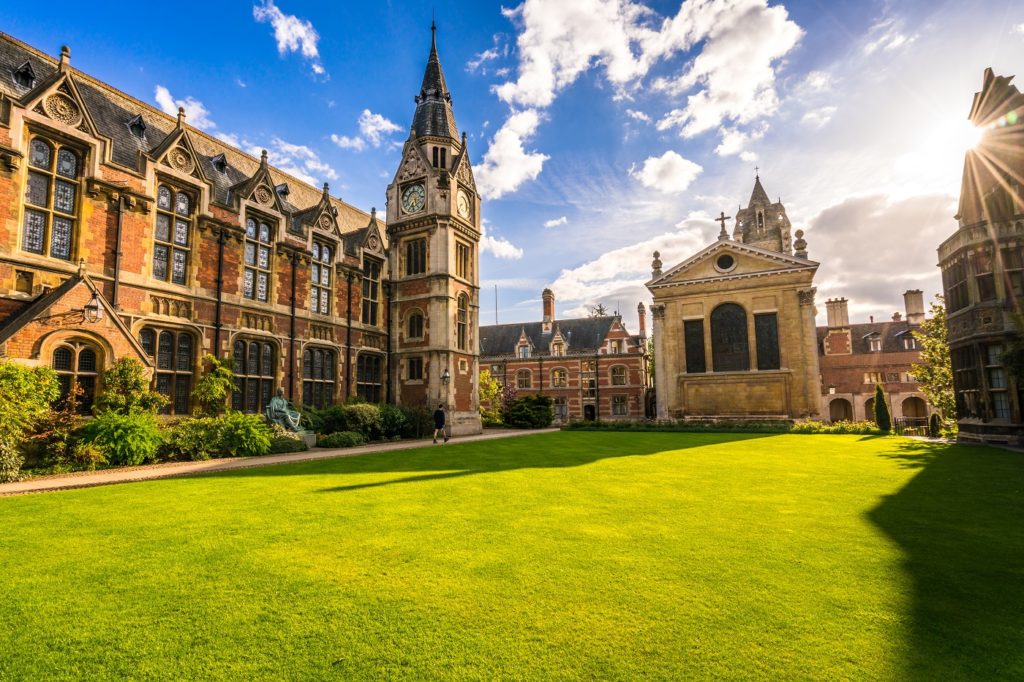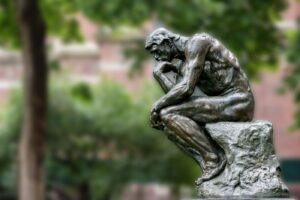A year ago, reviewing Yuval Levin’s outstanding book on the state of our country’s institutions, I predicted that the next Democratic presidential administration would “be working around the clock to destroy the same institutions that Levin rightly says offer the best hope for our country’s future.”
Let us suppose that this prediction is now coming true, even as the pandemic has already brought countless institutions to their knees. Let us further presuppose Levin’s indispensable theoretical framework for understanding our social and political institutions: we badly need institutions that act as “molds” of character formation, not merely as “platforms” for members’ individual self-aggrandizement.
What then are we to do for the next four years? How are we to preserve our most valuable institutions when so many forces seem to be lined up against them? Can it really be “A Time To Build” new social institutions, now that we are so unsure of holding onto the ones we already have? How do we determine which of our various institutions are worth the sacrifices that the coming years are sure to demand, and which ones should instead be abandoned in order to concentrate our efforts elsewhere?
Answering these questions requires us to examine what it is that actually makes any institution good or bad at “molding” the character of its members. Drawing on the insights of Levin’s book, I will make the case that a particular type of K–12 school is the formative institution best suited to the needs of our time.
Incentive Structures
Start your day with Public Discourse
Sign up and get our daily essays sent straight to your inbox.Levin’s book can be somewhat misleading in its focus on our contemporary tendency to view our institutions as platforms rather than molds. We are often molded by institutions even or precisely when we think of them as platforms.
For example, anyone who joins a labor union surely sees it as the “platform” on which his own financial well-being will rest. The union will nonetheless either successfully “mold” its members by inducing them to act in service of its collective goals—which includes training them in virtues such as loyalty and solidarity—or it will fail to achieve its goals and eventually go out of existence. Similarly, social media institutions might seem to be “platforms” par excellence, but in fact are constantly molding our habits of discourse and thought in ways that are all too familiar. And our elite universities, precisely when they appear to be acting as mere platforms for their immature students’ moral solipsism, are in fact molding the expectations that their graduates will then carry into the numerous other institutions that they try to treat as platforms for culture-war virtue signaling.
In other words, bad institutions deform us through the same mechanisms by which good institutions form us. All institutions offer incentives that appeal to their members’ existing desires: better working conditions, a recurrent dopamine hit, a credential on the all-important CV. By means of those incentives, members are induced to acquire habits that in turn reshape their desires to serve more reliably the institution’s goals: greater collective bargaining power, untold billions in shareholder profits, bare financial solvency in an age of online education.
What matters most to the health of a morally formative institution is not so much how its members view it. What matters most is whether the institution’s goals and incentive structure will foster in its members habits that conduce to real human flourishing, or habits that positively impede it.
The Threats to Institutional Flourishing
Today one set of prominent institutions stands out for its catastrophically bad incentive structures. As long as they remain in existence, our institutions of social media will foster habits that make all of us into worse human beings. One question that must therefore be asked of any institution today is whether its own goals and incentive structure give it the wherewithal to resist the damage that social media are currently inflicting—not only on us as individuals, but also on most of our other institutions.
As Levin articulates beautifully in his book’s most devastating chapter, social media function as anti-institutional institutions, eroding the moral habits that every other institution requires in order to run well. By providing an instantaneous and effective public platform to individual professors, students, politicians, journalists, pastors, CEOs, and disgruntled employees, social media dissolve the incentive structures that had previously forced those individuals to do the hard work of earning recognition through the proper channels of loyal service to the institutions they should call home.
As for the effect on individuals, Levin joins Matthew Crawford, Sherry Turkle, and others who have called attention to “the bizarre spectacle of our society driving itself mad on social media.” As Levin explains at length, social media form us by deforming us: they “forcefully discourage” numerous virtues such as the “discipline and reticence so essential to leadership, professionalism, responsibility, decency, and maturity.” For social media companies cannot do what we expect any company to do—pursue their own profits—without training their users to be self-absorbed, vain, shallow, aggressive, irritable, cowardly, intemperate, dismissive, impatient, and narrow-minded. Nor can they be what they are without cutting us off from the world that exists beyond our own preferences, depriving us of the privacy necessary to genuine friendship, destroying the formalities that safeguard the most important aspects of social life (especially relations between the sexes), and universalizing the loathsome vices that were once peculiar to celebrities (since in “the selfie culture . . . we each act as our own paparazzi”).
Even after this withering critique, Levin expresses some hope that our society might somehow “develop novel antibodies to this set of problems.” The analogy is borrowed from Glenn Reynolds’s argument that, just as we developed immunity to the new infectious diseases fostered by the rapidly growing cities of the Industrial Revolution, we may some day learn to cope with the somewhat more metaphorical maladies of the internet (whose anonymous discourses Levin earlier compared to an “open sewer pipe”).
Social media function as anti-institutional institutions, eroding the moral habits that every other institution requires in order to run well.
Neither Levin nor Reynolds appears to intend as much, but their arresting analogies ought to serve as a reminder of the forceful remedies that will become necessary if anyone ever wishes to tackle head-on the human misery fostered by social media. For how did we “develop” our “novel antibodies” to industrial-era diseases? We undertook extensive scientific research aimed at eradicating those diseases. Then we required the “novel antibodies” developed by that research to be injected into the bodies of millions of young Americans. Also, we closed up open sewer pipes.
Given the absence to date of any political will for such drastic public measures against the mental diseases spread by social media, perhaps the most that an individual can do for now is follow Levin’s advice to “consciously reduce the time we spend on these platforms.” But we should not be satisfied with the most that an individual can do. The Temperance Movement had to spend decades building up voluntary institutions to combat alcohol addiction before anything like Prohibition could be politically viable. Today we urgently need sub-political institutions that could form in us, not only the virtues that tech most tends to erode, but also the active counter-habits that we all need in order to resist the powerful incentive structures of our highly de-formative social media institutions.
We cannot expect much help in this regard from most of our nation’s existing institutions, which have shown themselves more likely to fall prey to the vices fostered by social media than to offer any real resistance to them. And many of the most prominent institutions that Levin’s book analyzes are already struggling to remain viable and relevant after recent technological developments—of which social media are only a part.
Social media companies cannot do what we expect any company to do—pursue their own profits—without training their users to be self-absorbed, vain, shallow, aggressive, irritable, cowardly, intemperate, dismissive, impatient, and narrow-minded. Nor can they be what they are without . . . depriving us of the privacy necessary to genuine friendship.
For example, until our newspapers develop (at least) university-like endowments to keep them from folding under the blows of Facebook and Craigslist, who can blame precariously employed reporters for treating their current journalistic home as a mere platform for their independent personal brand? As long as local papers do continue to fold under those blows, who can follow local politics closely enough to pour themselves into the institutions of local government? If local politics becomes boring or inaccessible, what talented young college graduate would not prefer national politics? Until we follow Levin’s suggestions in reforming our national political parties, why would legislators in the age of C-Span and Twitter treat Congress as more than a platform from which to signal to primary voters? And when our most revered national institutions receive insufficient respect from their own elected members, how will our young people be disposed to regard all other institutions?
None of this is to deny that many of our American institutions still have some life in them, and still foster certain virtues more than vices. And Americans have often found unexpected opportunities to revitalize old institutions or to found new ones. But an institution, new or old, must be able to draw on unusual sources of strength if it is not only to survive the social media hurricane intact, but to shelter its own members from that storm’s buffets.
Where to Look for Better Institutions
In seeking out this type of unusually strong institution, we should take a clue from Levin’s bold and innovative critique of the meritocratic pressures that now shape so much of our culture and economy. Meritocracy in the ordinary sense is generally a bad thing for institutions, he strikingly shows, for the meritocratic principle always “implicitly substitutes intellect for character and efficiency for integrity.” (Unsurprisingly, this “often doesn’t end well,” for individuals and institutions alike.) We badly need institutions with enough confident devotion to their own goal or mission that they can, to at least some extent, privilege integrity over efficiency and character over raw intellect.
At the heart of the American meritocratic system are our elite institutions of higher education. These institutions form and train our elites in the cold meritocratic habits that then warp the many other institutions whose incentive structures these elite graduates will later shape. Of course, our universities do try to aspire to some higher moral goal than simply grooming the fittest rats for the great race. Indeed, as increasingly lonely and anxious college students have found themselves profoundly unsatisfied by the pursuit of success for success’s sake, our nation’s campuses have in the past decade undergone a minor surge of re-moralization.
This change can hardly be celebrated, for it is coming at the expense of the freedom of speech and inquiry that are indispensable to the mission of any university worthy of the name. Still, as Levin powerfully argues, defenses of free speech alone are not a sufficient answer to today’s new campus moralists:
What is required instead is a genuine counterbalance—a competing case about the purpose of the university, advanced in moral terms that can speak to a deep and legitimate hunger for the good and true. It must be an argument for what free inquiry and speech on campus could make possible—not simply for an undirected and unbounded freedom to say anything. It must be an argument for the university as a mold of moral character, not a platform for performative moralism. . . . [It must] show in an attractive, engaged, appealing way how to fill the spaces opened up by academic freedom, not just how to keep them open.
Although Levin does not say so, the argument he eloquently calls for here is in fact already being made every day, in both word and deed, on a handful of the most countercultural campuses in our nation. I happen to teach at one of them. My own university’s stated mission is to form young leaders in the intellectual and moral virtues that will prepare them for a lifetime of service to family, community, country, and church. I will admit I think we are rather good at it.
Anyone privileged to work at one of these outliers in contemporary higher education will already be familiar with all those healthy institutional characteristics whose absence (from our major national institutions, at least) is demonstrated at length in Levin’s book. If a college or university has managed to continue pursuing what it knows to be a true moral and intellectual formation for its students and faculty—if it has been diverted from that goal neither by today’s cultural fads nor by next year’s magazine rankings—then it can teach us something about the type of institution that may also be able to weather the storms of social media, as well as similarly hostile forces in our culture today.
How Good Institutions Work
A look at the unique incentive structures of these few countercultural universities and colleges shows how they have been able to maintain their institutional health thus far. As Levin argues, a healthy institution will have to be defended by an “internal party of” that institution: a group of people united by their love of that institution even if they may be divided on many other things. In American life today, there is perhaps no more reliable “party of the institution” than the student-alumni-faculty community of any college or university.
Yet as Levin also mentions, most of our institutions of higher education have suffered recently from a greatly expanded administrative apparatus, staffed by professionals who understand less about this particular community of learners than about the nationwide trends that their own formation has trained them to respond to (whether trends in meritocratic best practices, or in culture-war moralisms, or in both). At the same time and relatedly, most American professors are paying more attention to their own national reputations, at the expense of devoted loyalty to their own colleagues and students.
For it is now a generation or two since American universities decided to shift their own institutional incentive structures by giving more weight in the tenure process to research rather than teaching. This induced professors to work harder to earn the respect of peers scattered across the country, whom one might call the “party of the academy.” It turned them away from efforts to earn the respect of the student-alumni-faculty community that is the “party” of their own home institution. The new breed of professors produced by this change in incentives are in some ways better and in other ways worse than their predecessors. But when it comes to the habits of devotion, love, and integrity that lead to happiness for professors and students alike, they are pretty clearly worse.
The new breed of professors produced by this change in incentives are in some ways better and in other ways worse than their predecessors. But when it comes to the habits of devotion, love, and integrity that lead to happiness for professors and students alike, they are pretty clearly worse.
Some schools, like my own, have put up significant resistance to this meritocratic shift. Their resistance has been rooted in a strong awareness of the school’s sacred educational mission, usually (as in our case) understood in explicitly religious terms. A university with that awareness, while remaining attentive to the standards of the wider academy and culture on which we all unavoidably depend, will have the confidence to demand that its faculty remain partisans of their own institution first and foremost, putting loyalty ahead of professional success as conventionally measured. This confidence in turn creates an incentive structure that rewards the faculty for pouring ourselves into the institution so as to be molded by it.
With the institution’s direction thus set by a committed class of institutional leaders (i.e., the faculty), the rest of the institution stands a fighting chance of doing its job acceptably well. A faculty so devoted to the university’s educational mission will not easily tolerate the administrative usurpations that have poisoned the life of the mind at so many other schools. Our students, for their part, are always drawn to our institution by a blend of mundane and loftier incentives. Yet under the faculty’s leadership, the school then acts as a mold that slowly reshapes those students’ desires, rather than letting them treat the institution as a platform for the immature desires with which they arrived.
Some of these institutional strengths, as I have described them, clearly depend on factors unique to the college or university setting (such as the tenure system). Those strengths are further reinforced where an educational curriculum emphasizes study of the classics, along with other books written long before our current anti-institutional age. Where education is pursued in a proudly anti-presentist mode, the curriculum opens students to being inspired by ways of life that do not suffer from our own time’s peculiar resistance to formative institutions, and awakens in students the desire to be molded by something more than the parade of empty narcissism on Instagram. Students at such a school may even encounter the ideas of those original institutional theorists, the classical political philosophers: for example, Xenophon’s Education of Cyrus offers a vivid depiction of how meritocratic reforms can turn the most outstanding character-molding institutions into a mere platform for individual ambition. (It doesn’t end well.)
Nonetheless, although such outstanding institutions of higher education are essential to our national well-being, the vast majority of these institutions’ members will experience their molding effects for only four years of their lives. If we accept Levin’s Aristotelian insight that all of us are in need of such morally formative institutions throughout our adult lives, then we will need to find other institutions to which we can apply these lessons drawn from the successes of our countercultural universities and colleges.
While there are many local and non-elite institutions that can contribute to filling the holes in the modern American psyche that Yuval Levin has penetratingly diagnosed, the single institution best suited to do so is the mission-driven, tech-skeptical K–12 school.
The Institutions We Need
Those who wish to find or build such institutions in the spirit of Levin’s book must not be misled by that book’s emphasis on national and hence elite institutions (Congress, the national media, elite universities, Big Tech). After thoroughly analyzing their recent failures, Levin calls for “better elite institutions” to “form [elites] to serve the broader public.” But surely today we are in dire need of elites formed by local and non-elite institutions, so that these elites will retain the habits of heart and mind that keep them closer to the “broader public” they ought to be serving. We need elites whose formation encourages them to direct their talents at the local problems they can actually solve, rather than at the national problems most of us can only yell about.
In the same spirit, Levin emphasizes the lack of public confidence in our institutions as a sign of their manifest failure. This is perfectly reasonable when diagnosing, say, the news media or Congress: their primary clients are the American public, so they cannot be succeeding if the public does not trust them. But there is no parallel reason why the prospective founder or reformer of, say, a local church or labor union, should be worried about gaining the confidence of the wider community. A church or a union certainly needs the confidence of its actual and potential members, but it can easily act as a healthy character mold for them without ever earning more than grudging toleration from the general public.
I would therefore draw a practical conclusion that Levin’s book never quite reaches. While there are many local and non-elite institutions that can contribute to filling the holes in the modern American psyche that he has penetratingly diagnosed, the single institution best suited to do so is the mission-driven, tech-skeptical K–12 school. The sacred mission that animates the committed leadership class of such a school will likely, although not necessarily, be understood in explicitly religious terms. It will emphasize complete moral formation in a proudly anti-presentist mode, guided by the reading of old books. Thanks to the countercultural universities and colleges discussed above, such K–12 schools should find no shortage of potential teachers and administrators who have themselves already been molded by a similarly formative and tech-skeptical undergraduate or graduate education.
The moral-formative effects of such schools are nearly as important for their students’ parents as for the students themselves. In a culture where many parents find little time for anything but their job and their kids, and where most houses of worship suffer from crippling institutional weaknesses of their own, a mission-driven school community may well be the most morally formative institution that adults can belong to. In such a community, according to a recent Congressional report authored by Public Discourse contributor Patrick Brown, “interactions among parents [create] norms and a structure to monitor behavior, set expectations, and [build] relationships across age groups and social classes.” The mission of the school can become a mold that slowly reshapes the immature desires of students and parents alike.
If such school communities can become genuine oases of refuge from the technological addictions and degradations that are dragging down so many of our other institutions, as well as from the meritocratic treadmill that immiserates so many American students today, then these schools can certainly expect to maintain the confidence of their actual and potential members. Moreover, if our country can ever hope to see anything like the Tech Temperance movement that it badly needs, these school communities will be its likeliest incubators. But to repeat, in order to succeed at their job, such schools do not need anything more than grudging toleration from the general public.
Those who would give up institutional cohesion to purchase a little temporary nonpartisanship will soon lose both.
Schools and the Culture War
Unfortunately, these moral-formative institutions cannot expect toleration from the left side of our contemporary culture war. Now with the executive branch of the federal government at its back, the American Left seeks to destroy these institutions, as Leo Strauss once said in a similar context, “either by one stroke and without mercy or else by slow and gentle processes.”
Levin offers his defense of institutionalism as part of an effort to transcend the American culture war wherever possible. We can contribute to easing our left-right tensions, he thinks, if we build up parties-of-the-institutions that “cut across” those culture-war cleavages. I have argued that under current conditions, this is an impossible hope. If these institutions were to concede anything to the left side of our culture war—if they were to allow any weakening in their confident understanding of their own sacred formative mission—they would only soften and rot the very structures that they need in order to stand up to the tempest raging outside. Those who would give up institutional cohesion to purchase a little temporary nonpartisanship will soon lose both.
I would therefore suggest a more modest version of Levin’s hope. Although the educational institutions that our country most needs cannot avoid being deeply conservative by the standards of our time, they can nonetheless at least win and maintain the loyalty of individual members (faculty, students, parents) who belong to the other side of our American culture war. When these latter are independent-minded enough to recognize the sacred character of the institution’s mission even as interpreted by their conservative brethren; when they can appreciate the human results of its moral formation without themselves accepting every aspect of that formation; and when they can love the institution without requiring it to change its fundamental character—then the institution has transcended our culture war to the greatest extent that seems possible in our day.
Conservative educational institutions do seem better suited to transcend a different set of ideological battles that, curiously, Levin himself does not seem to mind waging. His book is, among other things, a polemic against those pessimistic religious conservatives who today peddle what he calls “self-indulgent gloom” about the purported failures of American liberalism. This shows an uncharacteristic lack of charity on Levin’s part. Pessimistic religious conservatives are of all Americans the likeliest to have long since absorbed his message that it is a “time to build” the local and formative institutions that can pass on our way of life within a culture increasingly hostile to it. I am even tempted to say that among today’s conservative intellectuals, one’s personal commitment to the building of local and formative institutions tends to be in inverse proportion to one’s recent optimism about the future of our country.
Although the educational institutions that our country most needs cannot avoid being deeply conservative by the standards of our time, they can nonetheless at least win and maintain the loyalty of individual members (faculty, students, parents) who belong to the other side of our American culture war.
As another great institutionalist once warned, no one should begin to “build” without first sitting down and counting his resources. The times we live in will not be kind to conservative institution-builders who cannot sit down and count their actual friends. For example, I am among those who argue that the recent growth and flourishing of classically themed religious and charter schools is a sign that liberalism has not quite failed yet. Other religious conservatives pour themselves into such schools precisely because they think that liberalism has failed. The argument is interesting and worth having, but it must not distract us from the urgent and shared tasks of institution-building.
Instead of entertaining any hope that manifestly conservative schools can be neutral in today’s culture wars, we ought at least to be glad that a common commitment to these institutions can point us beyond the ideological turf wars on the Right that consumed too much of conservatives’ intellectual energy during the heady years of the Trump Administration. Those who see in these educational institutions the best hope for American liberalism can, and now must, make common cause with others who regard them merely as the best antidote to liberalism’s poison.
To answer then the questions with which I began: We should be strengthening our existing schools and building new ones. We should staff them with leaders who will permit no weakening of their formative mission. We should fight to defend them against whatever forces may threaten them. We should pour ourselves into them because we know how difficult it will be to live well in today’s world without them. And we should do all this without tweeting about it.










